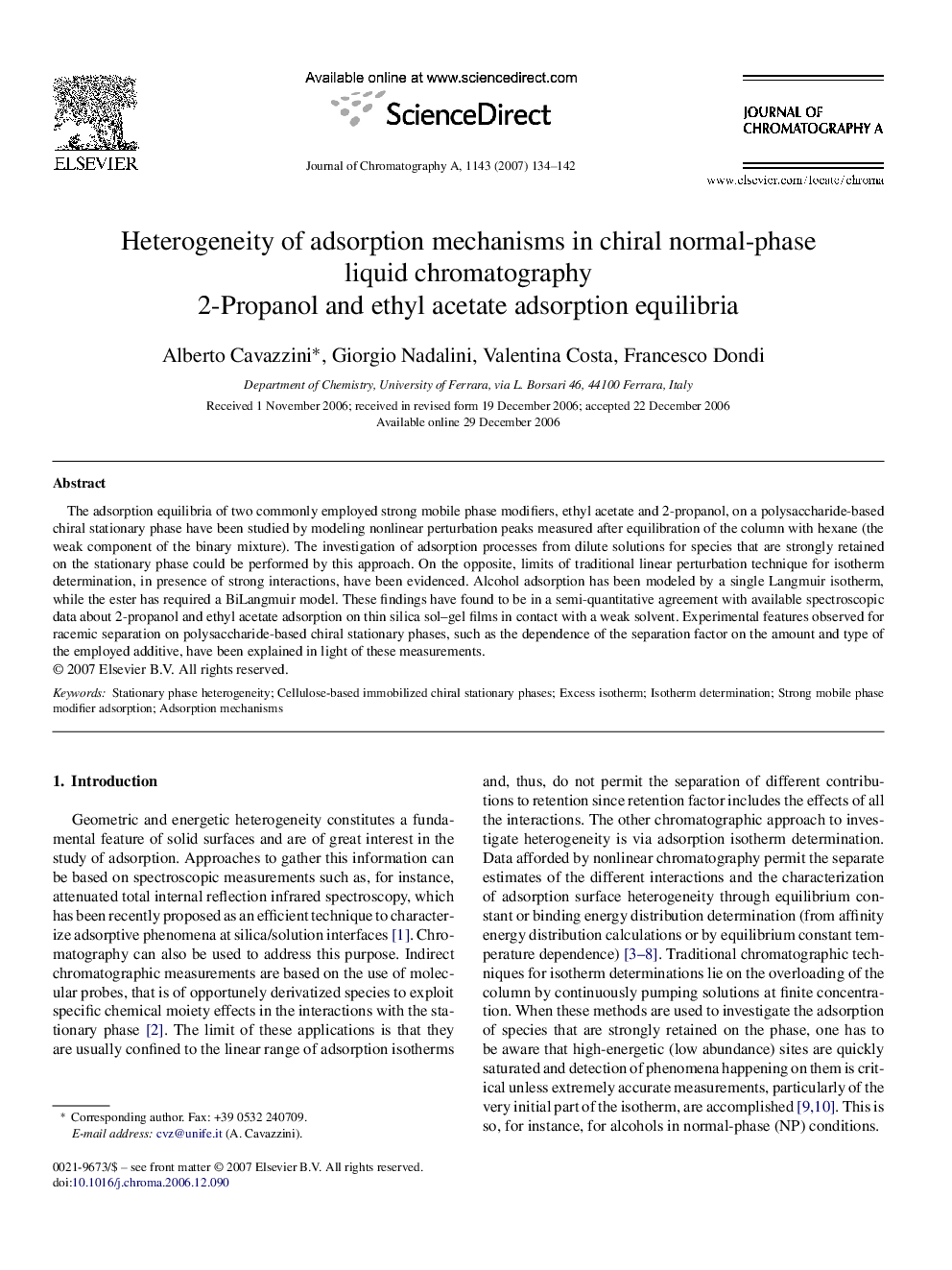| Article ID | Journal | Published Year | Pages | File Type |
|---|---|---|---|---|
| 1211161 | Journal of Chromatography A | 2007 | 9 Pages |
Abstract
The adsorption equilibria of two commonly employed strong mobile phase modifiers, ethyl acetate and 2-propanol, on a polysaccharide-based chiral stationary phase have been studied by modeling nonlinear perturbation peaks measured after equilibration of the column with hexane (the weak component of the binary mixture). The investigation of adsorption processes from dilute solutions for species that are strongly retained on the stationary phase could be performed by this approach. On the opposite, limits of traditional linear perturbation technique for isotherm determination, in presence of strong interactions, have been evidenced. Alcohol adsorption has been modeled by a single Langmuir isotherm, while the ester has required a BiLangmuir model. These findings have found to be in a semi-quantitative agreement with available spectroscopic data about 2-propanol and ethyl acetate adsorption on thin silica sol-gel films in contact with a weak solvent. Experimental features observed for racemic separation on polysaccharide-based chiral stationary phases, such as the dependence of the separation factor on the amount and type of the employed additive, have been explained in light of these measurements.
Related Topics
Physical Sciences and Engineering
Chemistry
Analytical Chemistry
Authors
Alberto Cavazzini, Giorgio Nadalini, Valentina Costa, Francesco Dondi,
